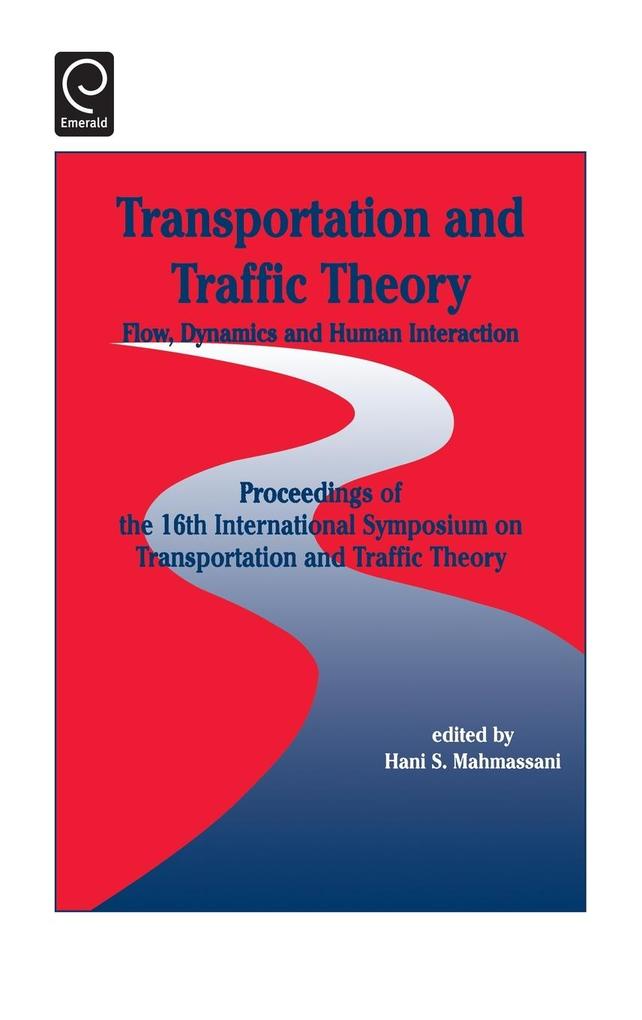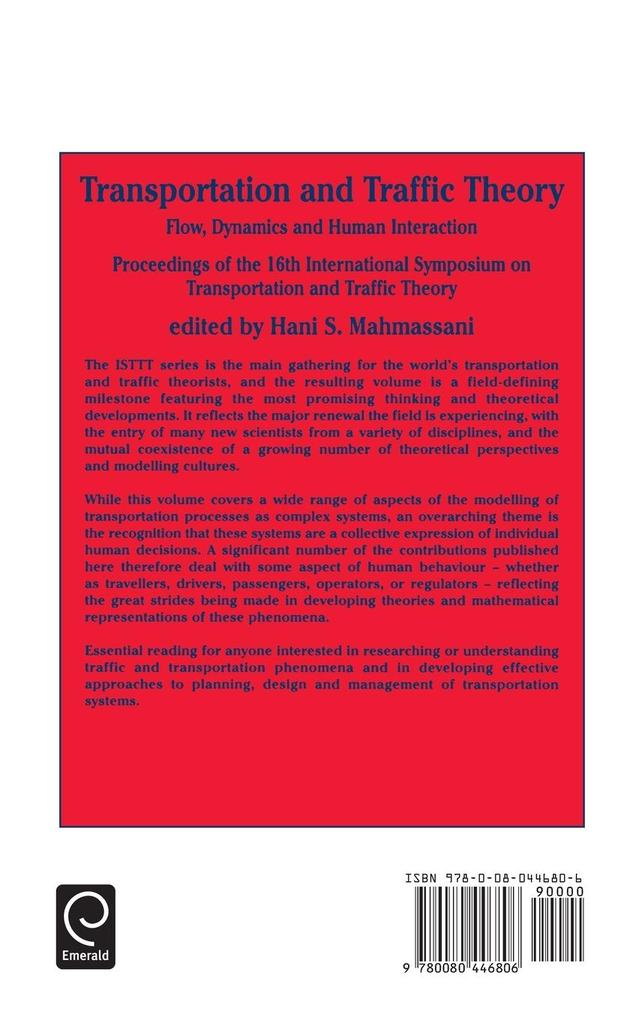
Zustellung: Sa, 19.07. - Mi, 23.07.
Versand in 7 Tagen
VersandkostenfreiBestellen & in Filiale abholen:
Covers a range of aspects of the modelling of transportation processes as complex systems. This work includes contributions that deal with some aspect of human behaviour whether as travellers, drivers, passengers, operators, or regulators reflecting the strides being made in developing theories and mathematical representations of these phenomena.
Inhaltsverzeichnis
Bilevel optimisation of prices in a variety of transportation models. A sequential experimental approach for analyzing second-best road pricing with unknown demand functions. Highway inventory control system. Path size and overlap in multi-modal transport networks. Pedestrian dynamics and evacuation: empirical results and design solutions. An empircal assessment of traffic operations. Reliability of freeway traffic flow: a stochastic concept of capacity. A critical comparison of the kinematic-wave model with observational data. Average velocity of waves propagating through congested freeway traffic. Microscopic three-phase traffic theory and its applications for freeway traffic control. Behavioural approach to instability, stop and go waves, wide jams and capacity drop. Controlling traffic breakdowns. Parameter estimation and analysis of car-following models. Modeling Impatience of drivers in passing maneuvers. A simulation model for motorway merging behaviour. Freeway ramp merging process observed in congested traffic: lag vehicle acceleration model. A first-order macroscopic traffic flow model for mixed traffic including moving bottleneck effects. A variational formulation of kinematic waves: bottleneck properties and examples. First-order macroscopic traffic flow models: intersection modeling, network modelling. Real-time estimation of travel times on signalized arterials. Calibration and validation of dynamic traffic assignment systems. Non-equilibrium dynamic traffic assignment. Precision of predicted travel time, the responses of travellers, and satisfaction in the travel experience. Behavioral dynamics in activity participation, travel, and information and communications technology. Modeling the joint labor-commute engagement decisions of San Francisco Bay Area residents. A model of daily time use allocation using fractional logit methodology. Efficient estimation of nested logit models using choice-based samples. Functional approximations to alternative-specific constants in time-period choice-modelling. Project-based activity scheduling for person agents. Modelling commercial vehicle empty trips: theory and application. Rationality and heterogeneity in taxi driver decision: application of a stochastic-process model of taxi behavior. A rolling-horizon approach to the optimal dispatching of taxis. Capacitated arc routing problem with extensions. User-equilibrium route set analysis of a large road network. Comparison of static maximum likelihood origin-destination formulations. A time-dependent activity and travel choice model with multiple parking options. Doubly dynamic equilibrium distribution approximation model for dynamic traffic assignment. A combined model of housing location and traffic equilibrium problems in a continuous transportation system.
Produktdetails
Erscheinungsdatum
07. Juni 2005
Sprache
englisch
Seitenanzahl
800
Herausgegeben von
Hani S. Mahmassani
Verlag/Hersteller
Produktart
gebunden
Gewicht
1350 g
Größe (L/B/H)
240/161/47 mm
ISBN
9780080446806
Entdecken Sie mehr
Bewertungen
0 Bewertungen
Es wurden noch keine Bewertungen abgegeben. Schreiben Sie die erste Bewertung zu "Transportation and Traffic Theory" und helfen Sie damit anderen bei der Kaufentscheidung.










